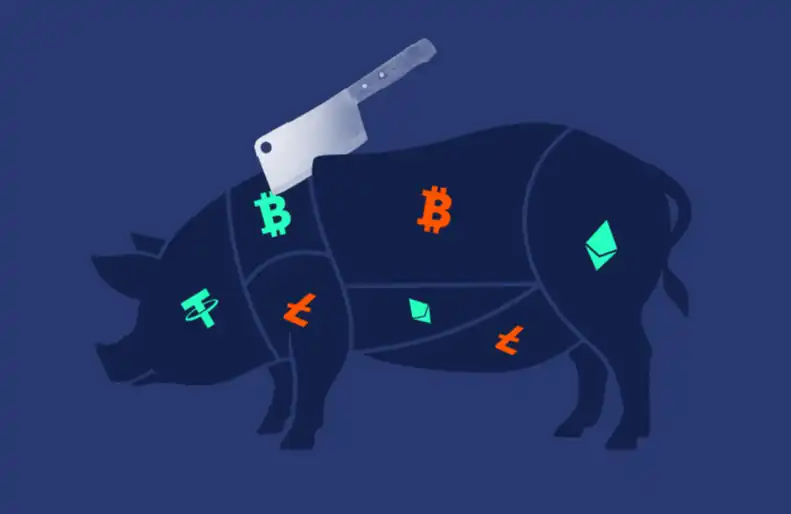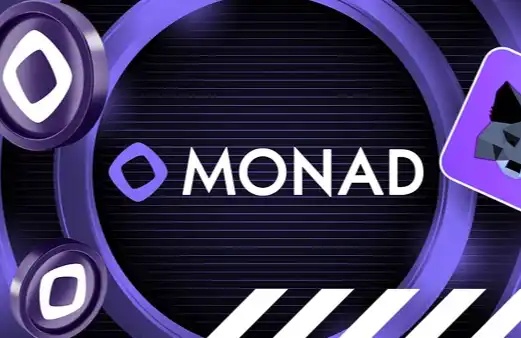Exclusive interview with "Social Monster" UXLINK: How to subvert the Web3.0 "acquaintance social" market?
UXLINK is a Web3.0 social platform and infrastructure project based on "acquaintance socialization". It is called the "social monster" by the community. Through the two-way acquaintance relationship between users, UXLINK hopes to bring trust to users. sense and higher growth and fission efficiency.
Since UXLINK launched UX Account to connect to EOA accounts, as of March 2, the token balance of EOA accounts linked to UX Account has exceeded 105 million US dollars, with an average of The balance of an EOA account address exceeds $350. Users are widely distributed in dozens of countries and regions such as Southeast Asia, the Middle East, Africa, Europe, and South Asia. Currently, the project has been online for 10 months, with more than 4 million certified users, covering 80,000 groups and nearly 6 million users.
Officially, the UXLINK RWS protocol will be gradually opened to connect more Web3 applications to provide developers and ecological partners with the best solutions, such as games and AI applications. User-oriented infrastructure services suitable for mass adoption.
UXLINK has recently completed a new round of financing, with a cumulative financing amount of more than US$9 million. Investors in this round include OKX Ventures, Manifold, Web3Port Foundation, UOB Venture, Comma3 Ventures, Cypher Capital, Kucoin Ventures, Gate Labs, Forgame (0484.HK), Signum Capital, 7UPDAO, etc. According to Singapore company registration information, HongShan, Matrixport Ventures, and ZhenFund are also listed investment institutions. The community revealed that UXLINK will most likely complete another round of financing before TGE.

After announcing the financing news , in order to learn more about the features and future plans of UXLINK, BlockBeats conducted an exclusive interview with members of the UXLINK team.
What is the difference between "Social Monster" UXLINK?
BlockBeats: Please briefly introduce the UXLINK project.
UXLINK: UXLINK leads an integrated social ecosystem that integrates Web3 traffic portals, social exchanges and infrastructure. The community affectionately calls UXLINK the "social monster." The underlying logic of UXLINK is unique and very innovative. Unlike other social infrastructure projects that focus on one-way following relationships, UXLINK focuses on two-way, acquaintance social relationships, similar to the difference in social structure between Weibo and WeChat.
UXLINK products include application layer and infrastructure layer. The application layer mainly includes the Social DEX module and the UX Growth (Link to Earn) module; the infrastructure layer includes multi-layer data that integrates acquaintance social relationships and the RWS social protocol, and plans to launch the Social Liquidity Layer, using OP Stack L2 + EigenDA to support the ecosystem Used by developers and third parties.
BlockBeats: As a social infrastructure, what projects or teams does UXLINK currently have and what practical products have been developed?
UXLINK: There are currently two main products in the application layer: UX Growth (Link to Earn) and Social DEX.
UX Growth (Link to Earn) is a new type of Dapp in the ecosystem. Users contribute their social graph data through the Link to Earn mechanism and can receive point rewards at the same time. This innovative concept merges social networking and transactions to create a powerful ecosystem where people can make the most of their digital assets. On the one hand, this product captures users’ social data for the UXLINK protocol, and on the other hand, it also provides user growth services for various products within the UXLINK ecosystem.
Social DEX is a combination of AI trading robot + UX Group. Based on the UXLink protocol, it helps users participate in the crypto market more effectively through AI auxiliary tools in a relatively familiar crowd environment. The logic is similar to China's "Pinduoduo", using acquaintance relationships for endorsement and guidance, reducing transaction friction and improving Transaction efficiency and experience.
The products at the infrastructure layer are currently mainly: RWS protocol. Developers can use the API and SDK provided by UXLINK to call the user's social graph to achieve possible understanding. Personalized recommendation services such as content or products you are interested in can greatly reduce the cost of product launch. We are also planning to launch the social chain of Social Liquidity Layer to provide liquidity for users’ social data assets, so that the value brought by users’ social networks can play a role in different WEB3 applications.
As the UXLINK infrastructure continues to improve, more and more developers and third-party Dapps have begun to enter the UXLINK platform. For example, recently, EarlyBird3, a third-party GameFi team, completed the cold start and user growth of the product by accessing the UXLink protocol. The product uses the social data of the UXLINK protocol to achieve social functions such as friend ranking and friend assistance, improving the user stickiness of the product. and experience. There are more reviews (such as OKAPI), AI (such as Bubble AI) and more products in the pipeline and will soon enter the ecosystem. These ecological projects will also thicken UXLINK's infrastructure in terms of data and enrich user experience.
BlockBeats: How is UXLINK different from other SocialFi projects?
UXLINK: The lowest level difference is the difference between a two-way, acquaintance social relationship and a one-way, follow-up relationship. UXLINK is the first project to launch social relationships among acquaintances.
The first is the difference in entry scenarios. Other SocialFi projects prefer native DAPPs to build WEB3’s social infrastructure and serve more existing encryption users. UXLINK starts from mature usage scenarios that users are familiar with, and uses products that have formed social network effects such as Telegram and Facebook to serve a wider user group.
Secondly, the social data formed is different. Other SocialFi products are more based on a new product form and begin to build a Twitter-like following relationship.
UXLINK starts from real social relationships and uses applications such as Telegram, Facebook, What's App, etc. to build a social relationship graph of acquaintances.
Finally, the entire application scenario is also different. It focuses on class relationships, one-to-many, and is more focused on marketing effects, based on the recommendation logic of KOL. Socializing with acquaintances and peer-to-peer are more inclined to build trust. Content and service recommendations based on friend relationships make it easier to achieve transactions and in-depth interactions, and increase the user stickiness of the product.
BlockBeats: We noticed that UXLINK mentioned Social Liquidity. What does it refer to specifically?
UXLINK: Social Liquidity refers to the liquidity of users’ social assets. We know that currently users’ social assets and the resulting huge wealth and power are in the hands of a few WEB2 companies, and users cannot transfer them based on their subjective wishes. UXLINK builds an open social protocol. Users can independently manage their own social assets and transfer them from DApp1 to DApp2. We believe that in this way, we can bring greater value to social assets and bring greater value to users and the world. Come to more benefits.
BlockBeats: Will there be social super applications on the scale of WEB2 in WEB3? If so, what are the remaining conditions? What plans does UXLINK have for this?
UXLINK: This will definitely appear. Social networking, especially social gatherings with acquaintances, will be the most powerful driving force, just like Facebook and WeChat successfully promoted the Mass Adoption of Web2.0. The essence of the Internet is connection, and connection is also in line with human nature. UXLINK will be the platform for super applications to take off.
The reason why Web3 has not yet popularized a large number of social applications is that we feel that there are still two basic conditions that need to be improved.
The first is the public chain infrastructure responsible for computing and storage, which requires lower costs and higher execution efficiency. This area is developing rapidly, and many participants are building this layer of infrastructure. I believe that in the near future, the cost and performance of centralized cloud services will become closer and closer.
The second is an open and transparent decentralized social graph that has formed a certain network effect. Currently, when developers develop social applications, they first access the social products of the existing WEB2 company, not because they are better, but because they are more cost-effective. UXLINK is committed to breaking this inequality by working with other Builders to build an open, decentralized social graph that belongs to users and provide services to WEB3 developers.
"Web1.0/Web2.0 have given birth to great products based on acquaintance social relationships, such as Facebook and WeChat, and have become the main promoters of Mass Adoption ; UXLINK is the pioneer of Web3 acquaintance social networking. Acquaintance relationships can maximize trust and minimize transaction friction. Trust is one of the challenges of Web3 Mass Adoption."
BlockBeats: Last question, does UXLINK have an airdrop plan? How to participate?
UXLINK: Of course, this will also happen. UXLINK will airdrop governance tokens before and after TGE based on the points of the user account and the weight of the user's interactive behavior. Currently, users can earn ecological points through Link to Earn and participating in activities and interactions of UXLINK ecological applications.
Welcome to join the official BlockBeats community:
Telegram Subscription Group: https://t.me/theblockbeats
Telegram Discussion Group: https://t.me/BlockBeats_App
Official Twitter Account: https://twitter.com/BlockBeatsAsia


 Forum
Forum Finance
Finance
 Specials
Specials
 On-chain Eco
On-chain Eco
 Entry
Entry
 Podcasts
Podcasts
 Activities
Activities
 OPRR
OPRR








